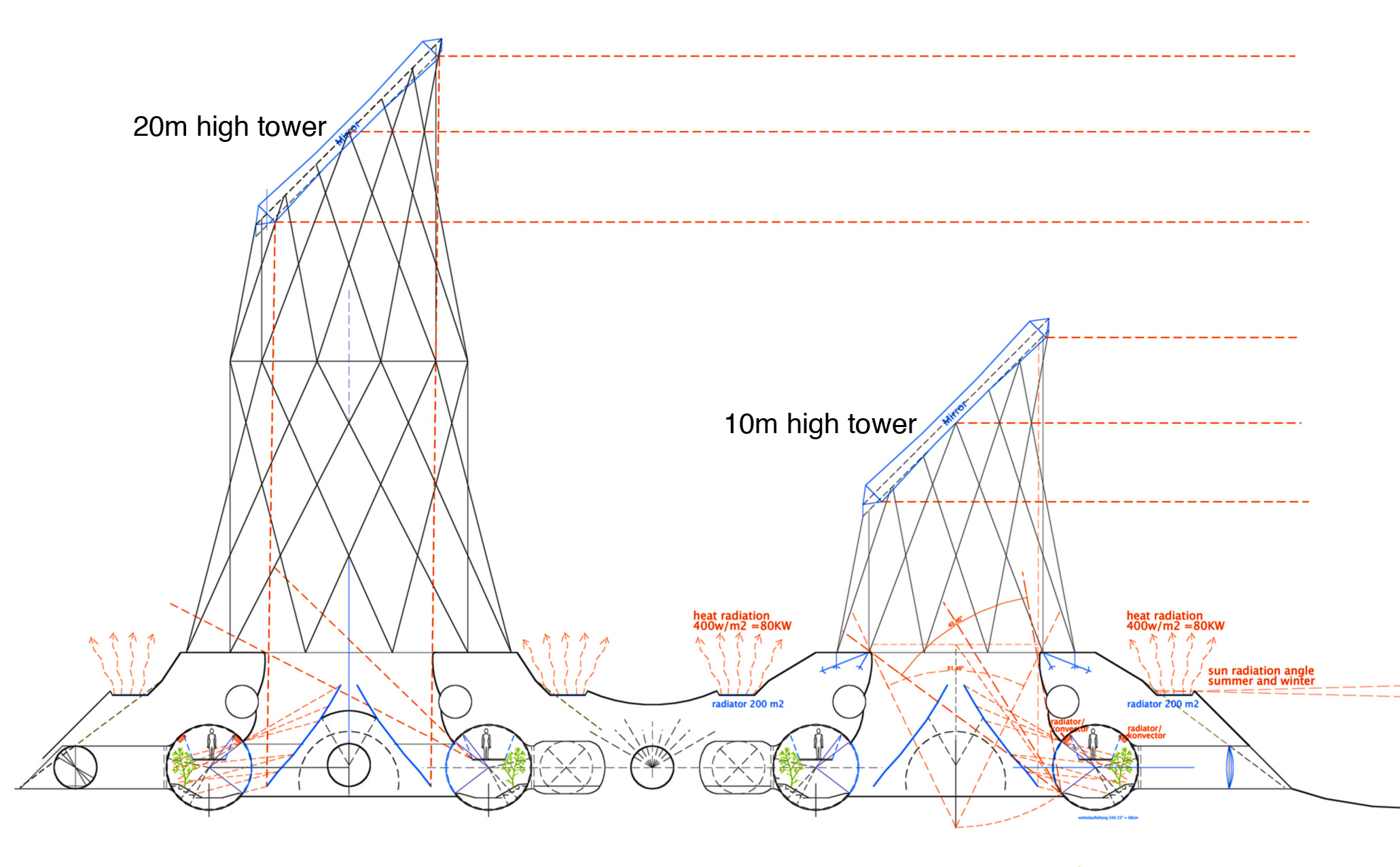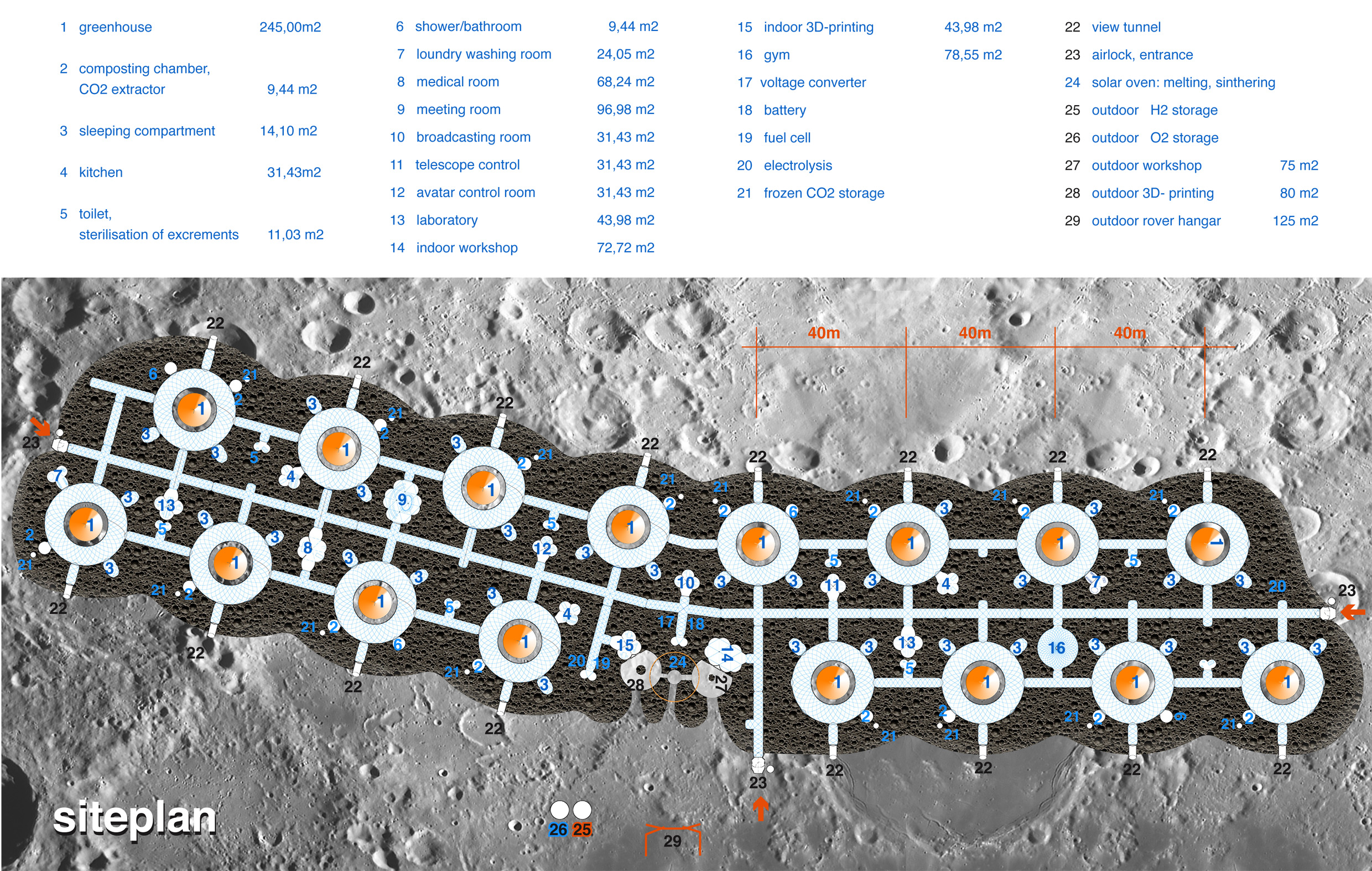2. Location & Constellation
For the selection of a suitable site for a lunar habitat, the following criteria have to be considered:
1) A maximum of (uninterrupted) solar irradiation in order to allow for food production in greenhouses and for producing electric power by photo-voltaic devices.
2) The site should be in a close vicinity to places where relevant amounts of water ice are supposed to exist at the surface or in the near subsurface. Water will be used for greenhouses, electrolysis to produce hydrogen propellant and oxygen, and for humans to drink and wash. The water sources do not necessarily need to be very close to the habitat but the distance should be accessible and in the maximum battery range of rovers (20 -30 km).
3) The vicinity of the habitat should be reachable by rovers, which implies that suitable pathways exist between the habitat and the places of interest to be explored, in particular the permanently shadowed regions inside craters.
4) The site needs to consist of a flat area large enough and in the right shape so that the habitat structure can be extended. The land also needs to be geologically stable.
5) We need a suitable landing site in a safety distance of about 300 -1000 meters to the habitat. This landing site should have a size of about 300m x 300m in order to host four SpaceX-Starships. It does not need to be well illuminated by sunlight and should preferably be on a lower altitude than the habitat itself, so that regolith particles cannot be flung onto the habitat by rocket thrust.
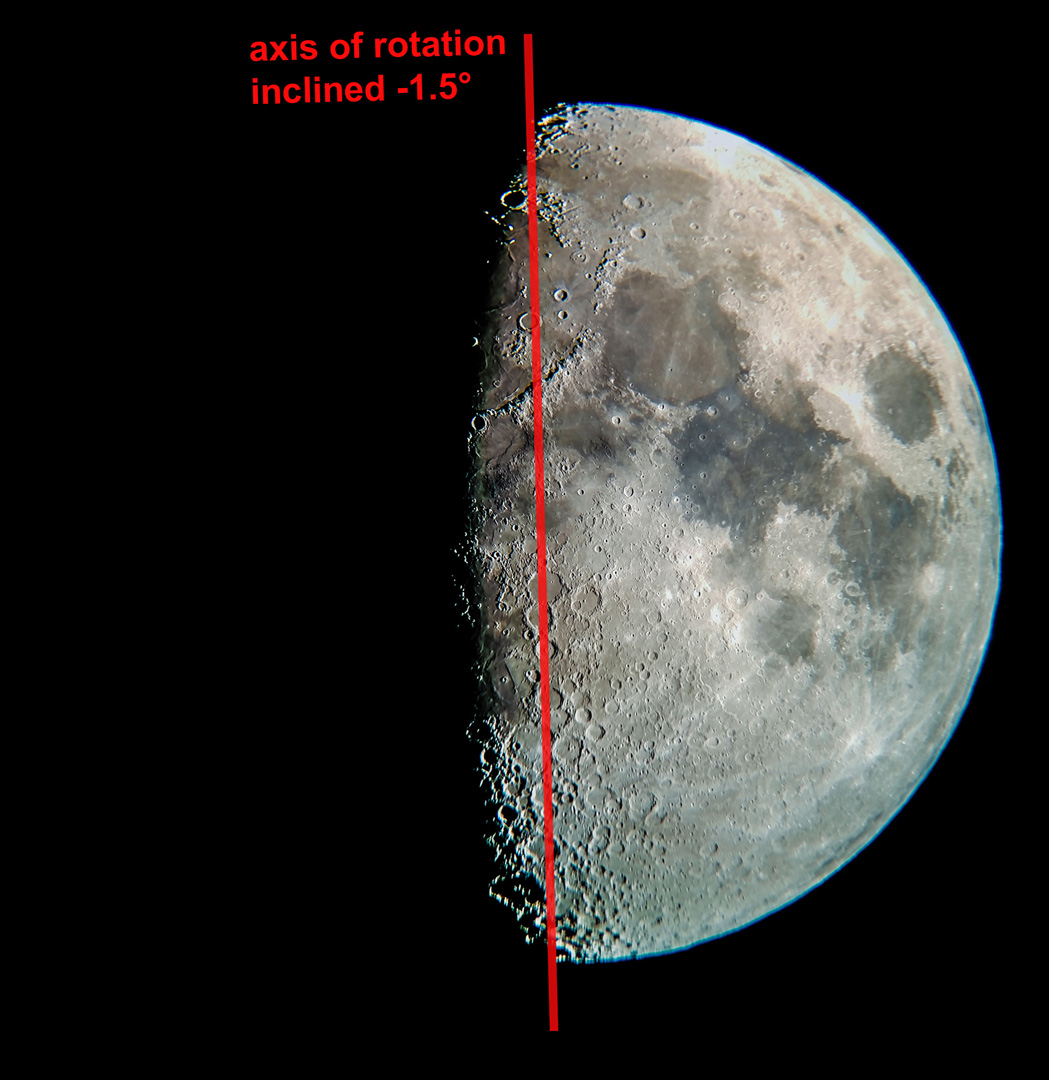
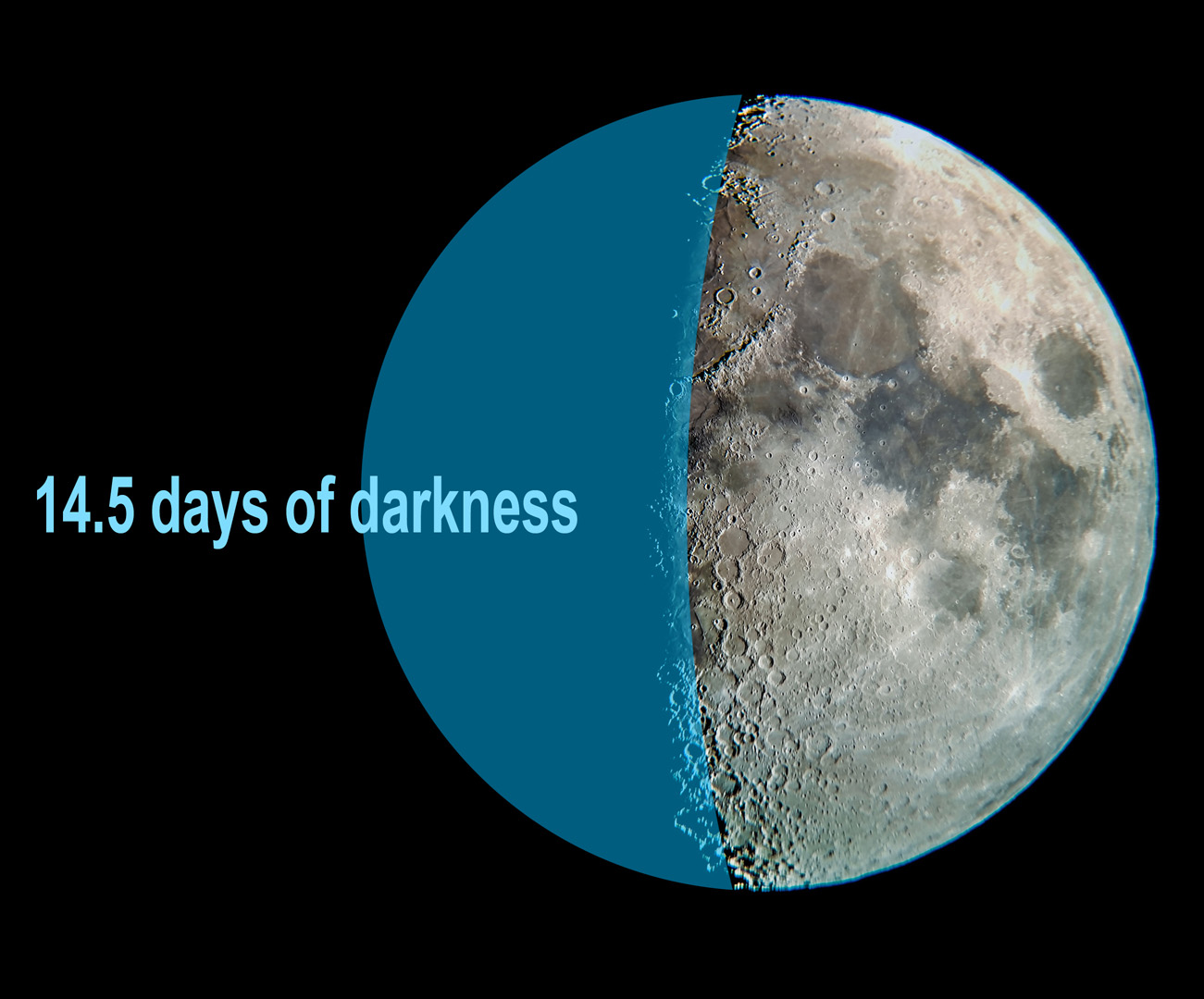
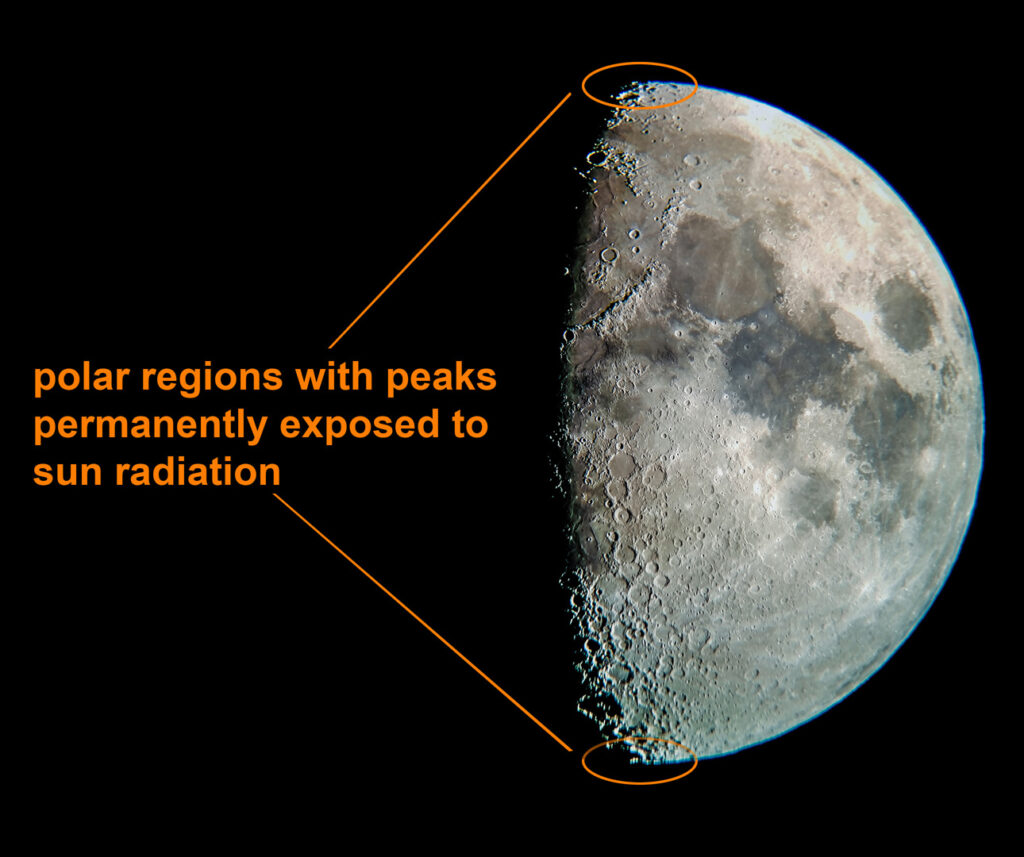
For a lunar habitat we need a location, with almost permanent sunlight. On most of the lunar surface, day and night each last 2 weeks. The axis of rotation of the moon-earth orbit is inclined only 1.5° to the sun. For this reason, at some peak points very close to the the poles, sunlight is almost permanently available.
We need sunlight that is as continuous as possible to generate electricity and to illuminate greenhouses, where oxygen and food are to be produced self-sufficiently.
Additionally, the ability to mine ice is another good reason to build a habitat in the polar region. There are permanently shadowed regions on the pole caps, where the temperature never raises above 200° Kelvin and water ice never could sublime in the vacuum.
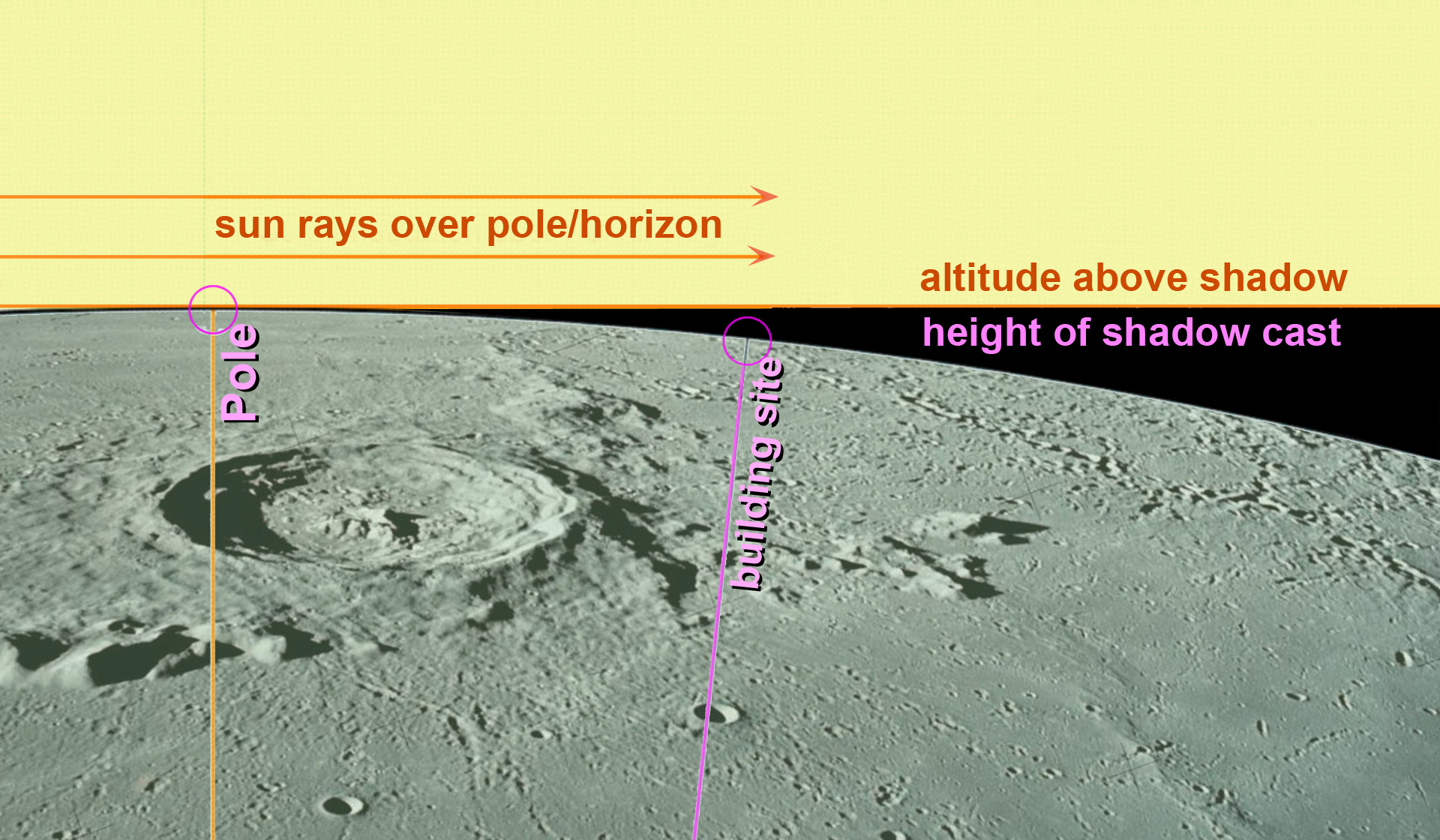
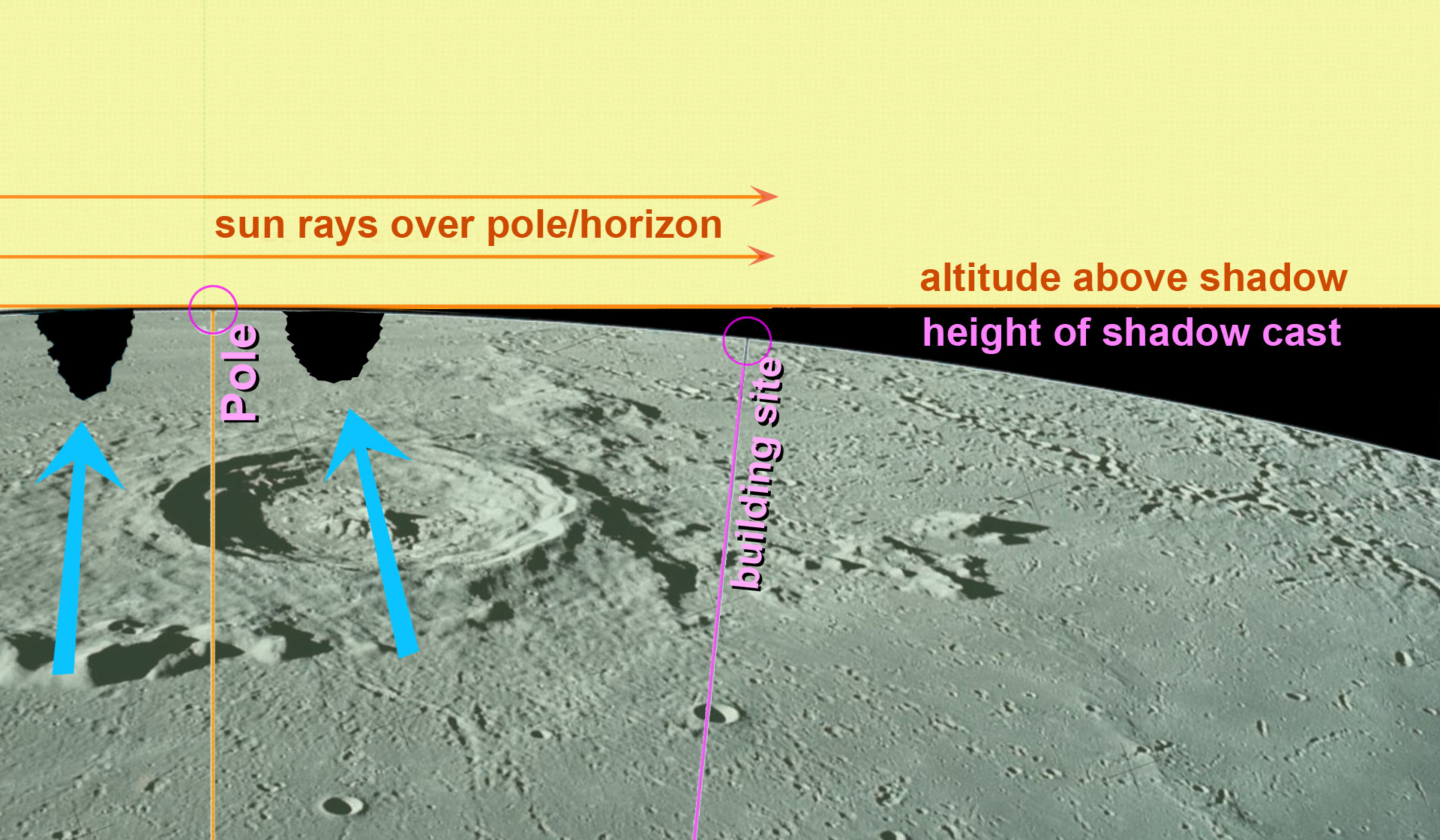
Places that might fulfil the criteria listed above have been identified and suggested in several studies, mainly based on the measurements performed by NASA’s Lunar Reconnaissance Orbiter (LRO) and other lunar orbiter spacecraft (see, e.g., Speyrer et al. ,2013; Vanoutryve et al. ,2010, etc.). Using LRO/LOLA data, Glaeser et al. (2014) and Glaeser et al. (2018) have proposed a couple of sites both near the Northpole and near the Southpole of the Moon, which obey very favorable illumination conditions and are in a reasonable distance from permanently shadowed regions.
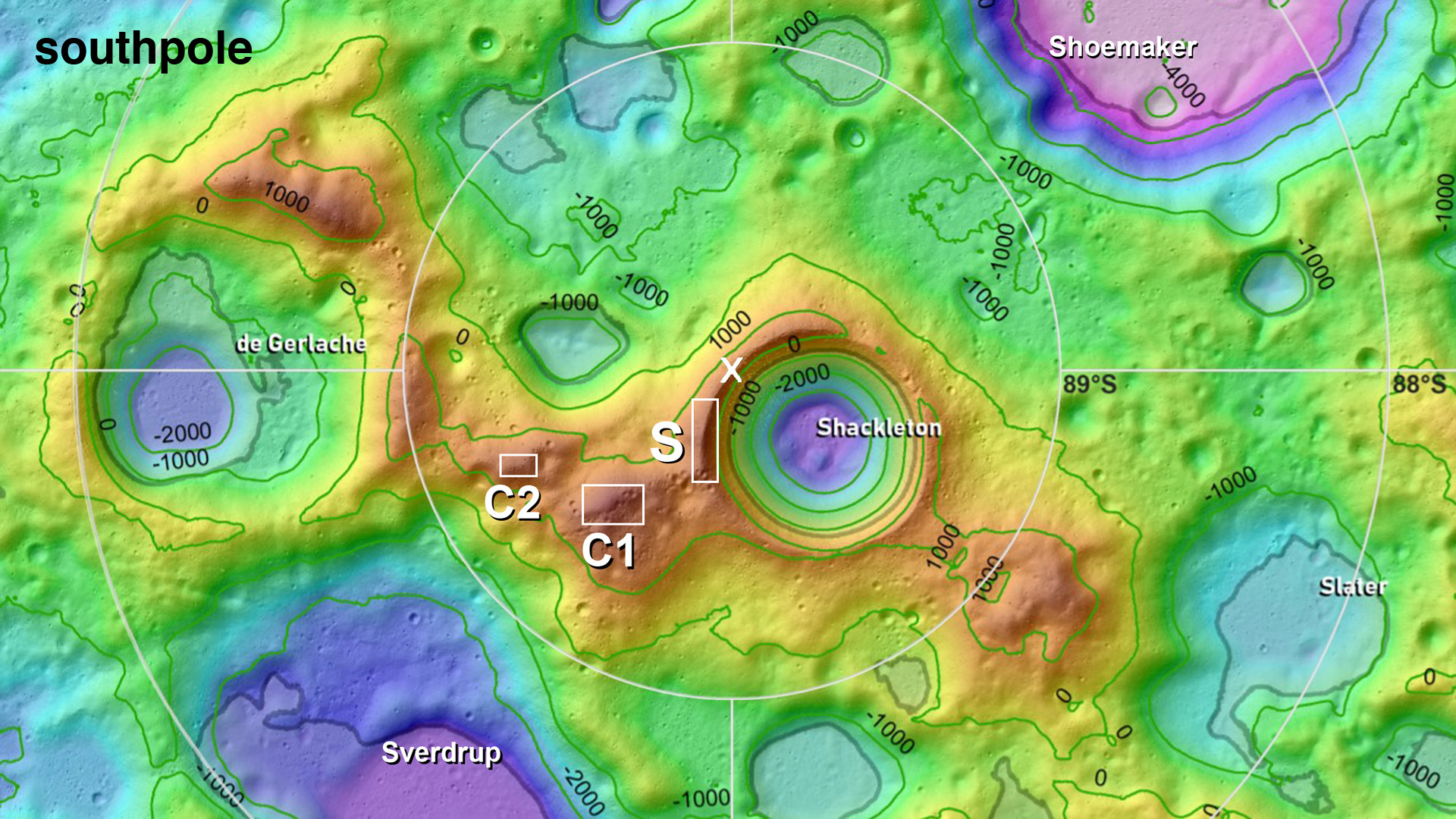
The best illuminated places within 1° angular distance from the Southpole are:
The rim of the Shackleton crater, highlighted as “S”-area by Glaeser et al. and the mountain ridge between the Gerlache crater and Shackleton crater highlighted as “C1” area and “ C2” area by Glaeser et al.
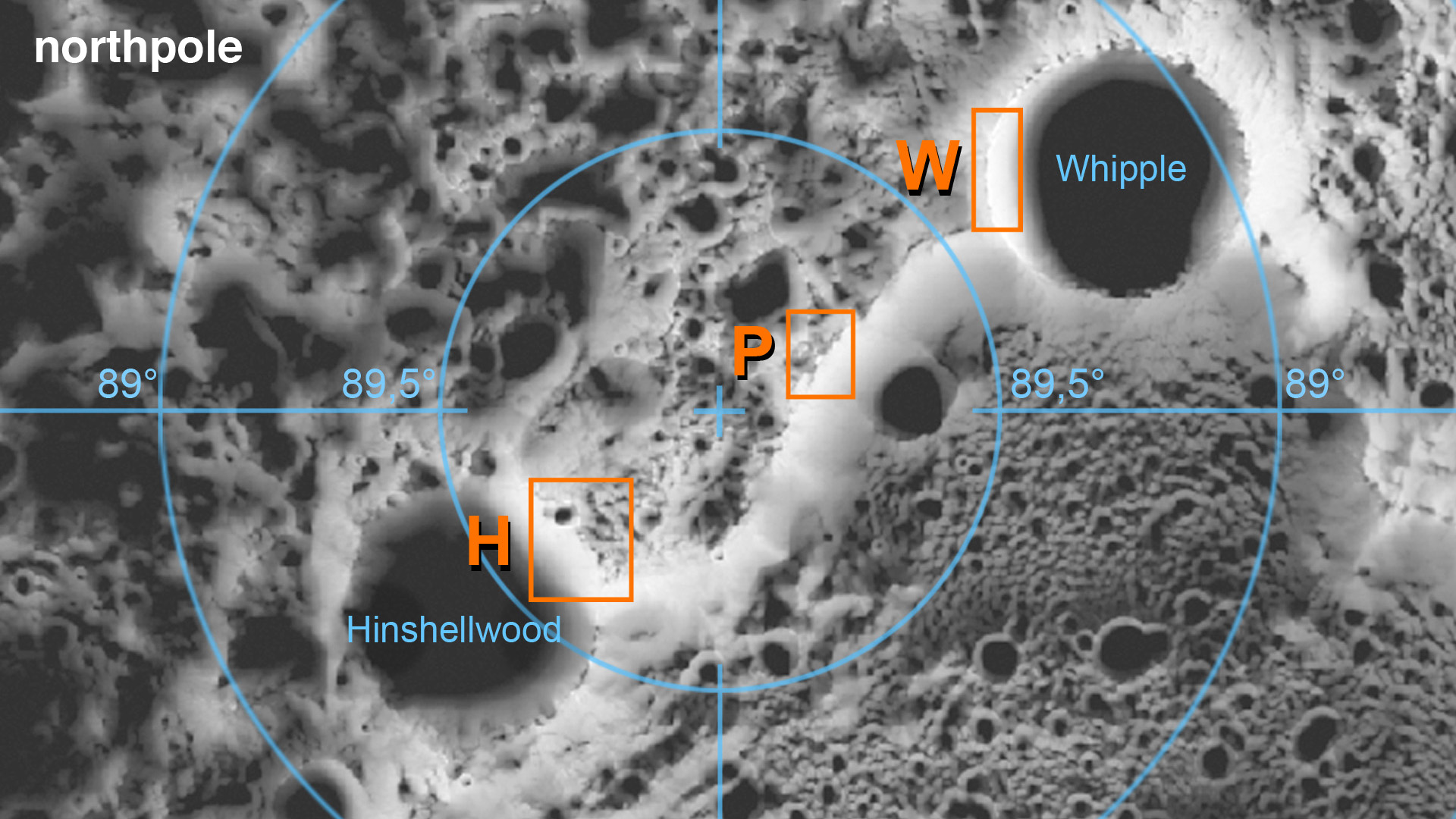
Northpole H0 region.
The best-illuminated places within 1° angular distance from the Northpole are on the rims of the Whipple crater and the Hinshelwood crater, as well as on the ridge between these two craters. Within this mountain range, Glaeser et al. (2018) suggested three well-illuminated zones, the H, P and W areas.
Habitat structure
The concept behind our design is to use natural sunlight for greenhouses where food and oxygen will be produced self-sufficiently and sustainably. In addition, drinkable water can be gained from condensation of water vapor and fruits. Organic waste is recycled in a natural way as well inside the greenhouse. 120m2 of greenhouse area are required to produce enough food for one human und optimal conditions.
Greenhouses
For one greenhouse unit the horizontally arriving sunlight is reflected vertically down into a small artificial crater, the central opening of a toroidal greenhouse structure. The reflector is an oval mirror membrane installed on a light truss frame tower. Another mirror with a conical shape reflects the sunlight laterally into the greenhouse areas. One greenhouse unit can feed two crewmembers, so a permanent habitat should consist of at least four greenhouse units, with the potential
to be extended later on. Several greenhouses are connected by modular tunnel elements, and other rooms and facilities are attached to the greenhouses.
Mirrors
Each mirror casts shadows on other mirrors. The more distance we keep between the mirrors, the shorter the period of one mirror casting shadow on the others, while the Moon rotates w.r.t. the Sun within a 29.3 days synodic lunar cycle.
However, as the distances between the mirrors grow, the required length of the tunnel system connecting the greenhouses is increasing too. Void area between the greenhouses is wasted place and more regolith needs to be moved by excavators. Since the sunlight comes in an almost horizontal angle and there is no atmosphere scattering the light, the shadow casts are almost infinitely long. Therefore, we had to find an arrangement of mirrors in a way, that they cast as little shadow as possible on each other, but still use the land area efficiently.
For this purpose, we analyzed different geometric arrangements:
- Square grid and triangular grid arrangement
- Cross-shaped arrangement
- Y-shaped linear arrangement
- One dimensional single row linear arrangement
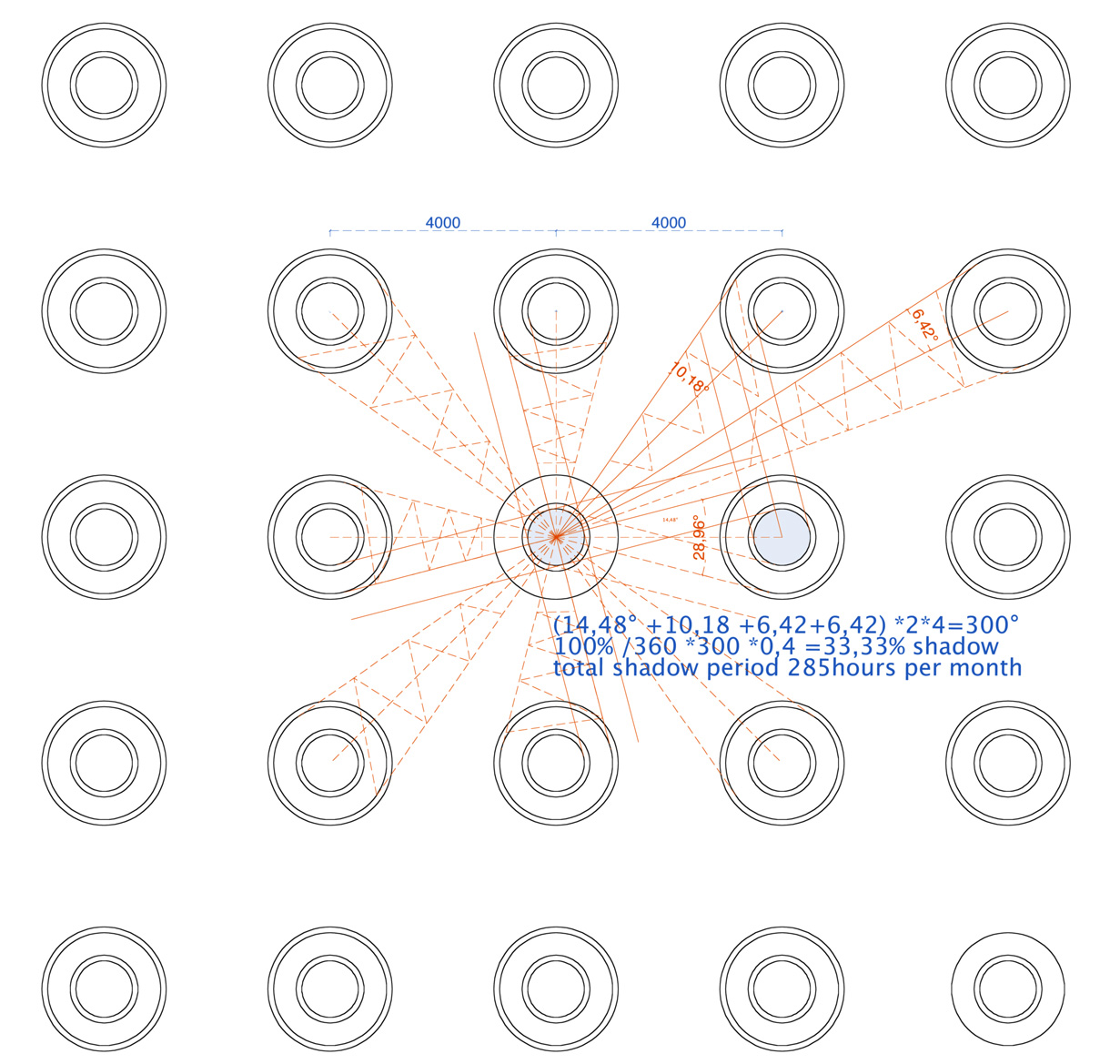
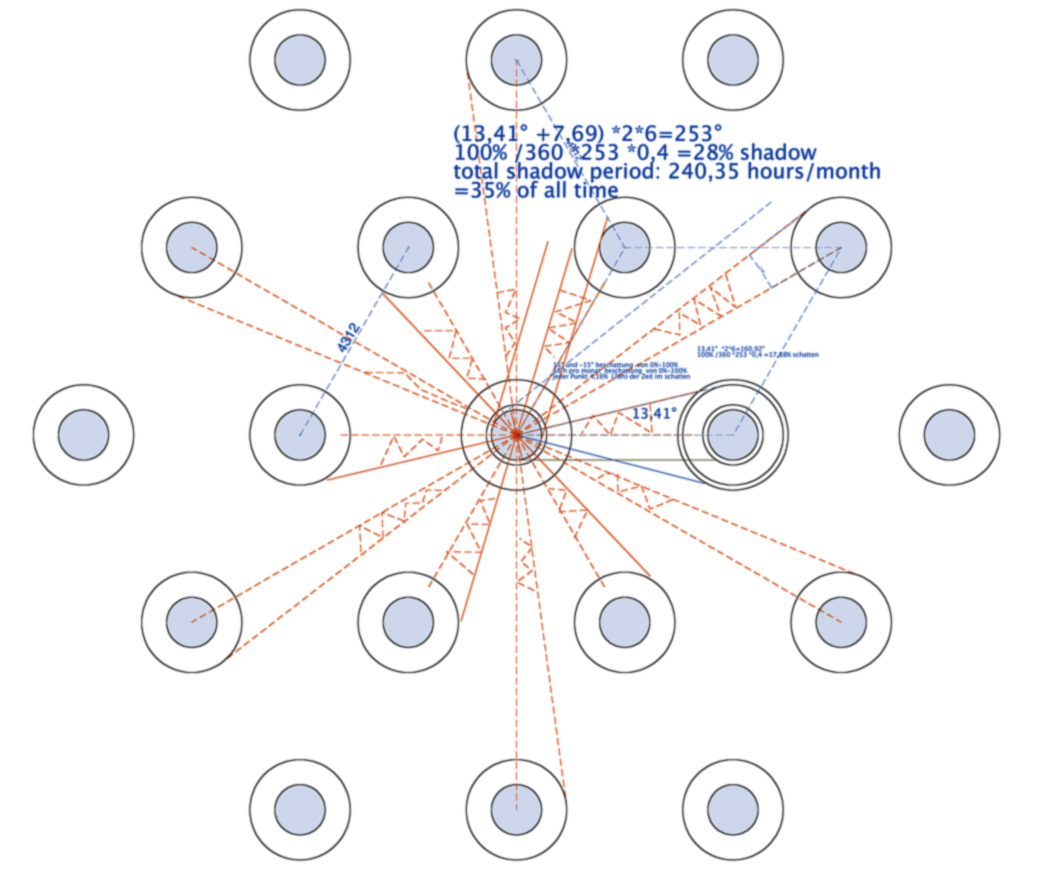
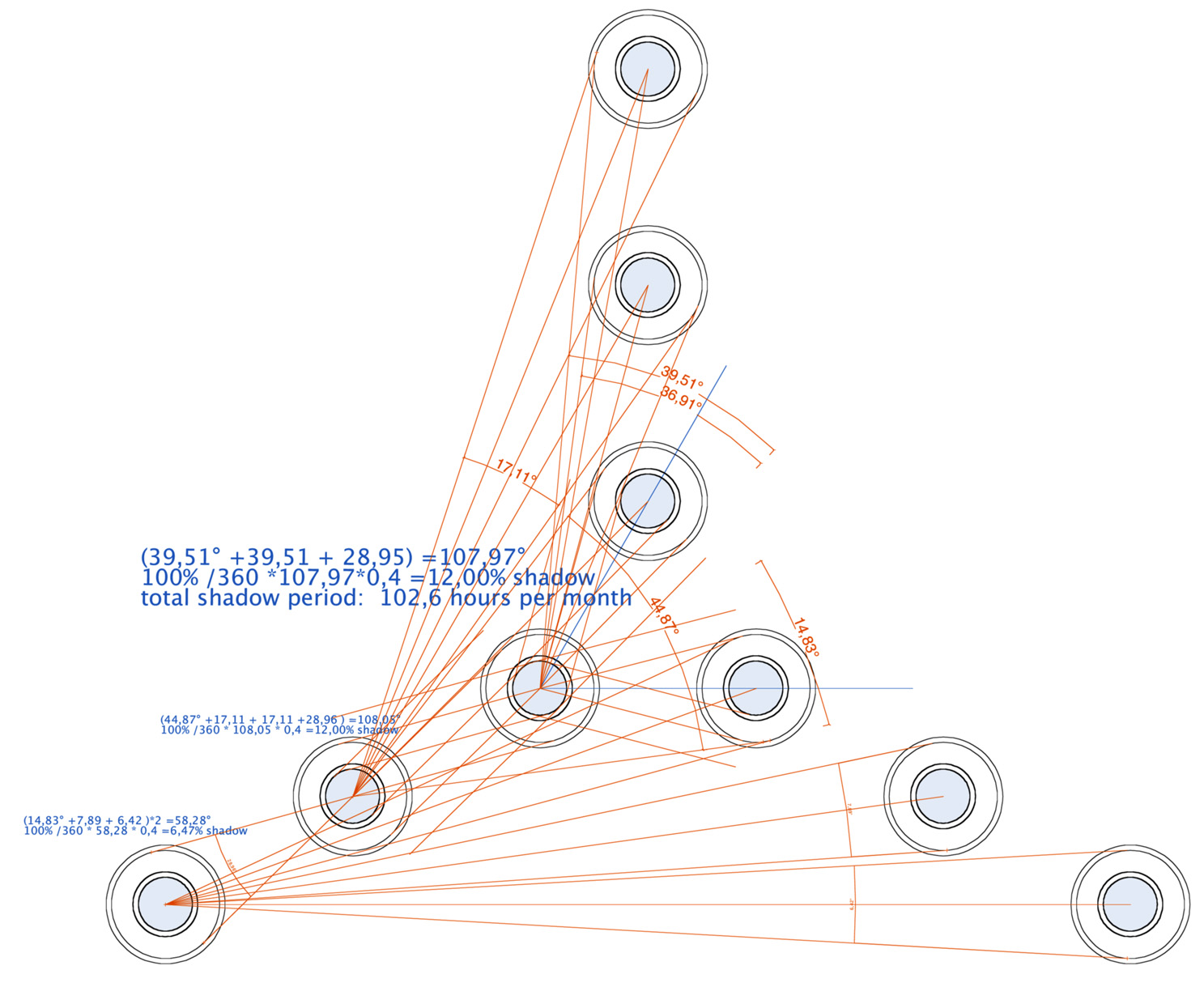
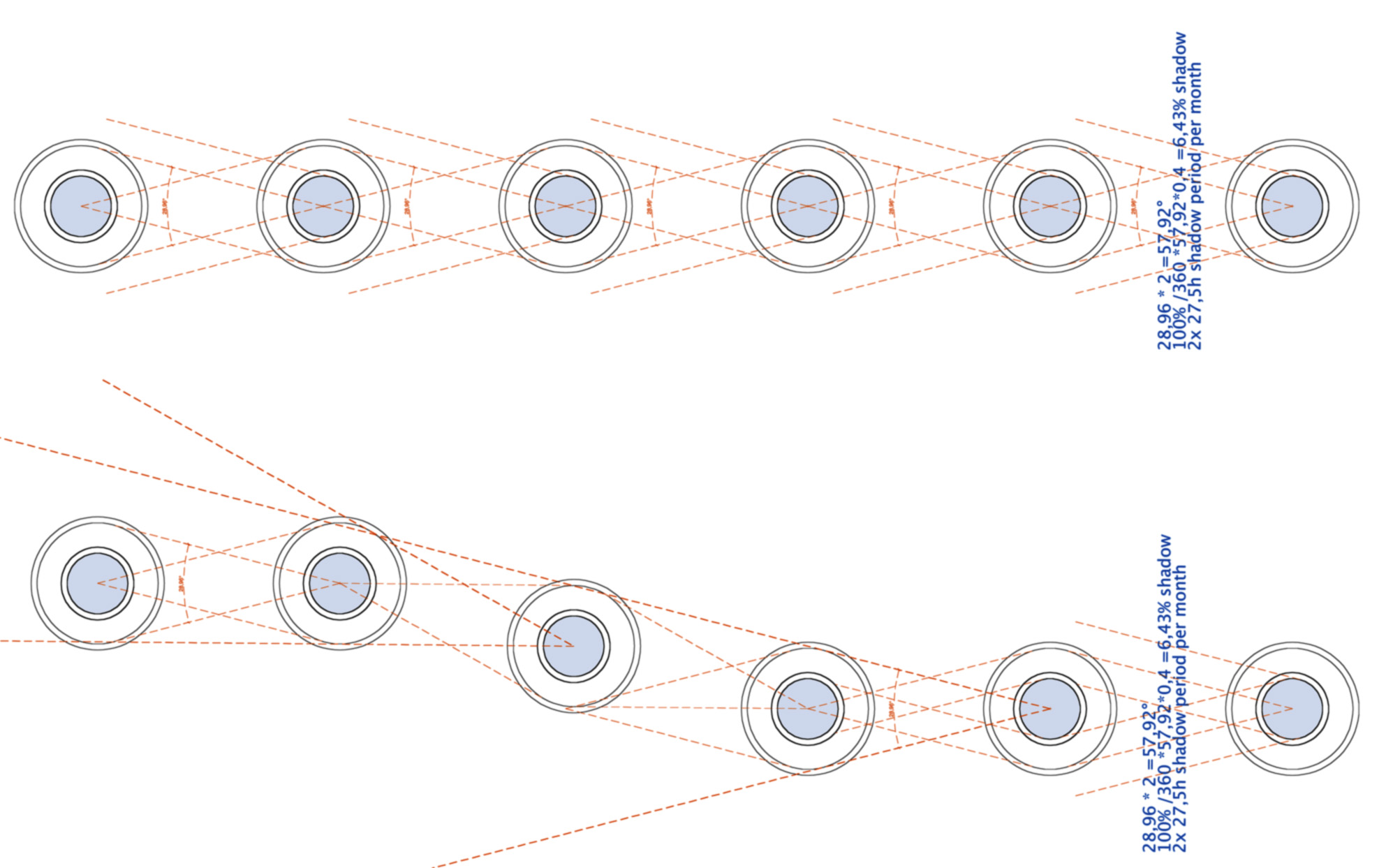
Not much surprisingly, we found out that a single row linear arrangement mentioned above as the last item causes the shortest shadow periods independent of how many units are added to the row. In that constellation, it only happens twice a month that mirrors cast shadows on each other.
To use the land and tunnel system more efficiently, we will provide two parallel rows with mirrors in different heights. In our nominal design, the mirror centers are chosen in a height of 10m and 20m, respectively, where much of the shadows cast by the natural landscape have disappeared (see the plots shown in the Appendix). Since only objects on the same height level can cast shadows to each other when illuminated from a horizontal direction, these two rows have no effect on each other.
The linear row can be bent a bit, in order to better adapt to the terrain, without increasing the shadowing periods significantly.
It is important, that sunlight is available consistently with short breaks only, to provide good growth of plants and production of oxygen inside the greenhouses and to produce photovoltaic electricity that does not require large batteries for storage over dark periods. Photovoltaic modules that are not operating efficiently and large batteries cause unnecessary payload.
Without sunlight a habitat would be dependent on nuclear reactors only. But the direct use of sunlight for photosynthesis is always preferable, since it is a free gift by nature and causes less payload than nuclear reactors.
